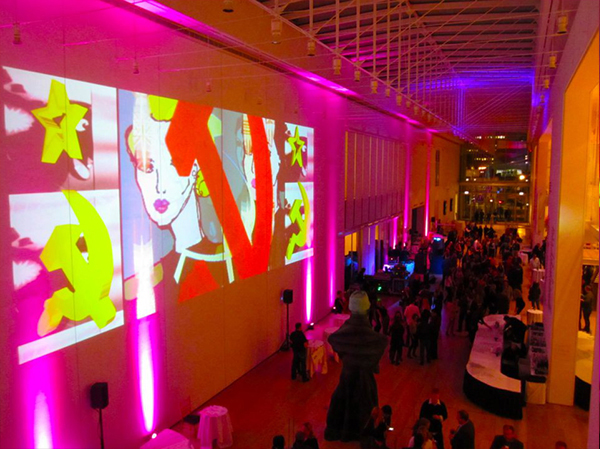
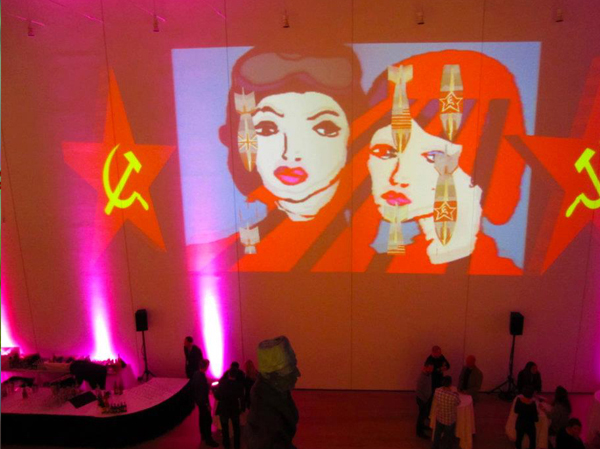
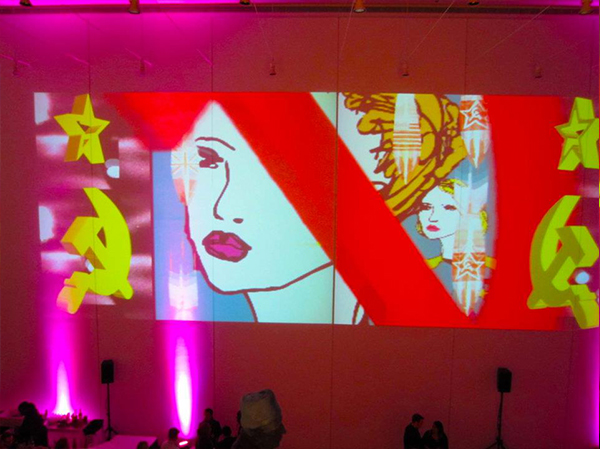
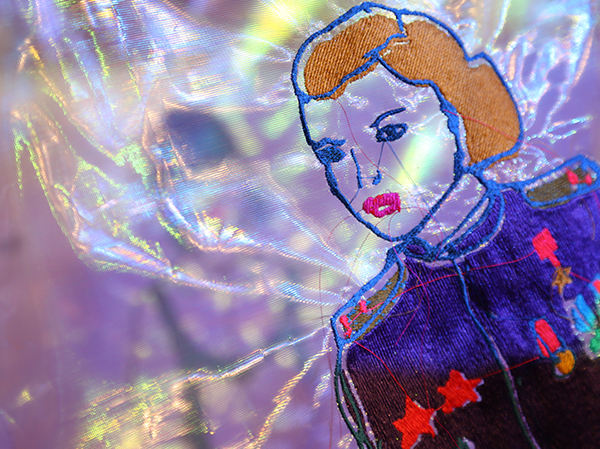
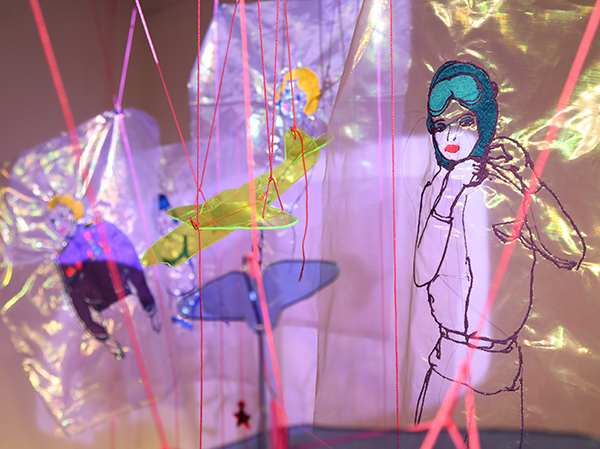
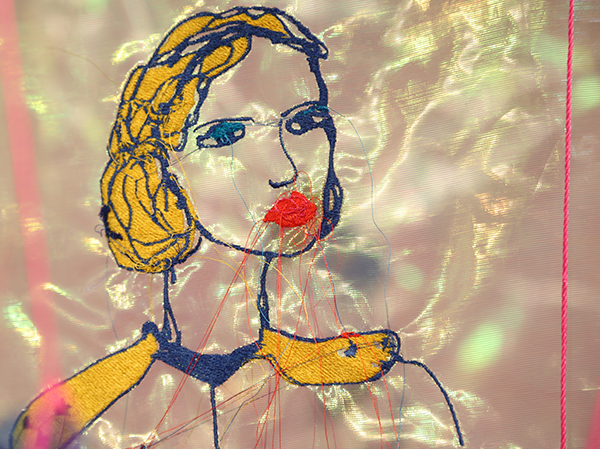
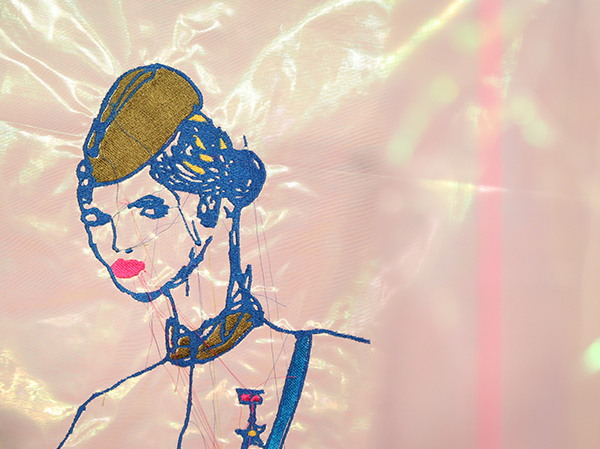
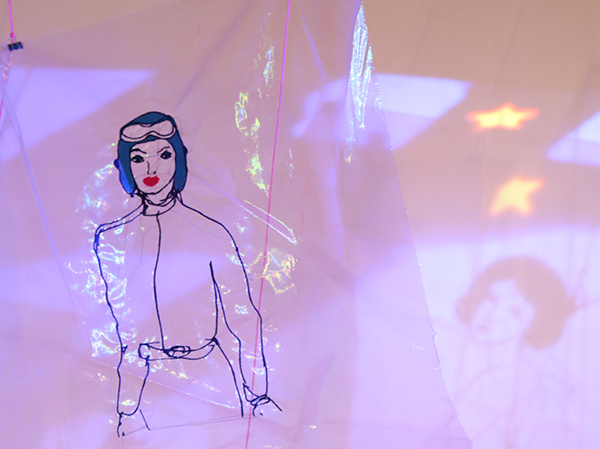
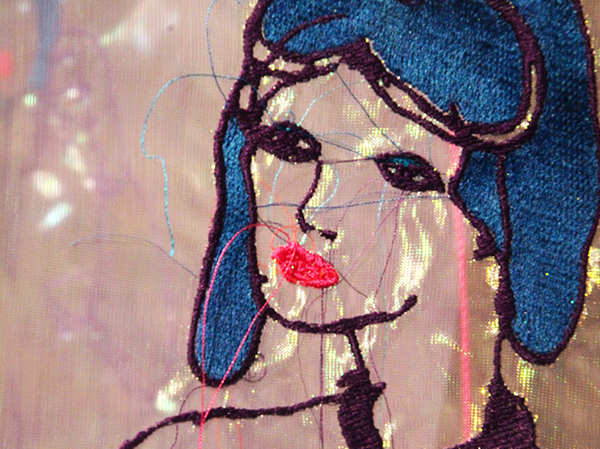
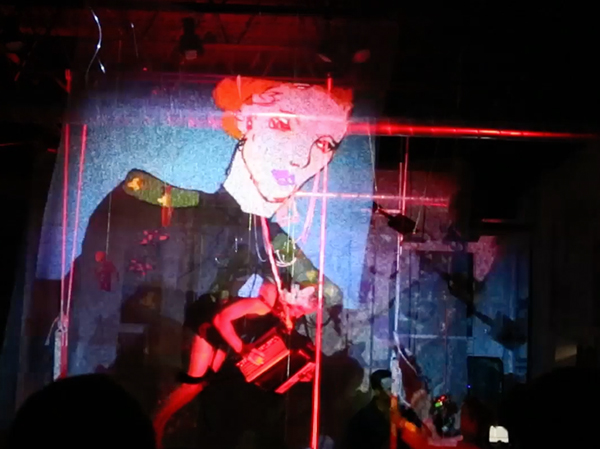
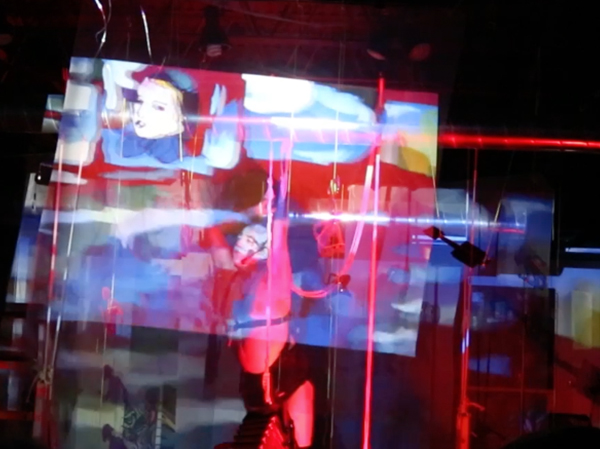
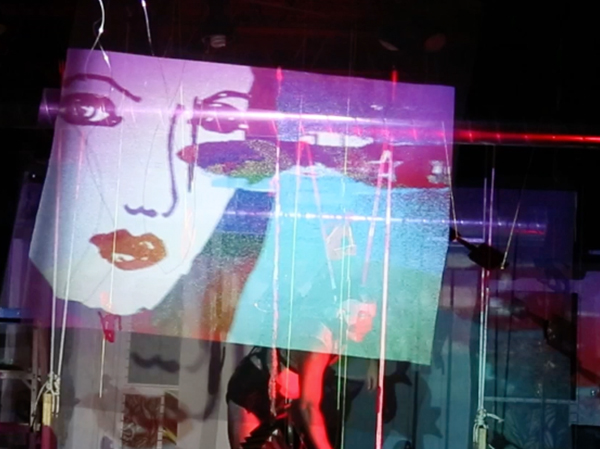
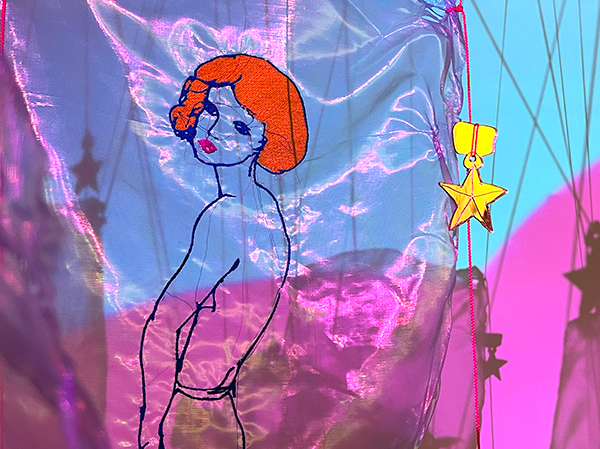
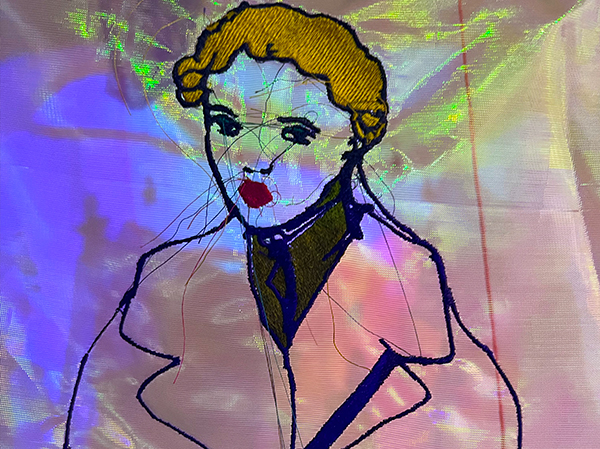
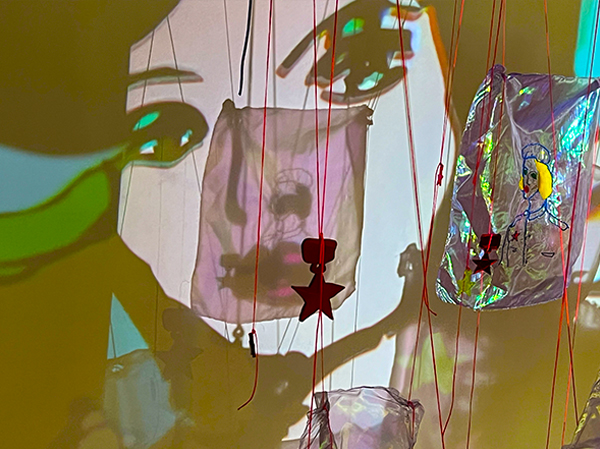
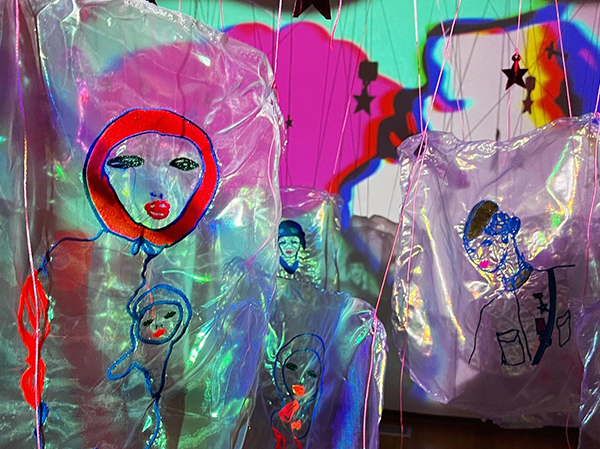
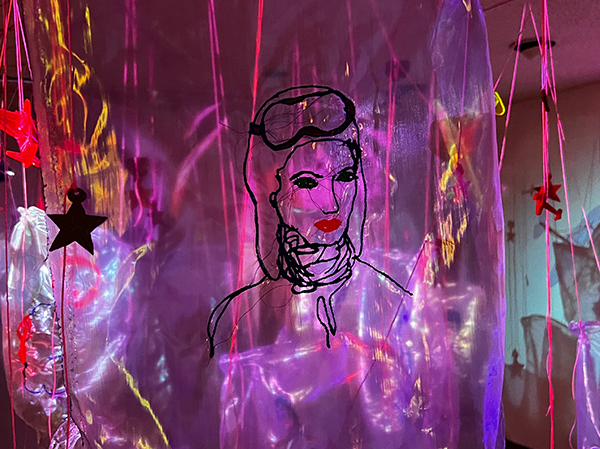
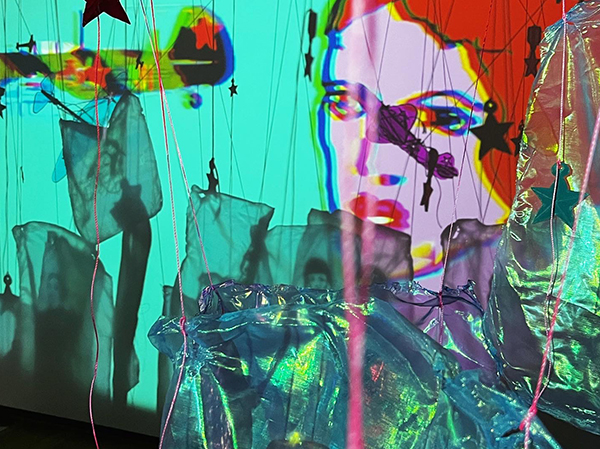

Windows On The War :: After Dark Party @ the Modern Wing :: October 2011
:: Live video Performance Collaboration with Liviu Pasare::

Windows On The War :: After Dark Party @ the Modern Wing :: October 2011
:: Live video Performance Collaboration with Liviu Pasare::

Windows On The War :: After Dark Party @ the Modern Wing :: October 2011
:: Live video Performance Collaboration with Liviu Pasare::

Unkissed Regiments :: October-November 2018 :: Chicago Art Department :: Long Time No See :: Curated by Carris Adams
:: Site Specific Multimedia Installation :: 9 Embroidered panels 2018 :: Video 2010-2017 with Improvised cello Performance by Ian Maksin 2017 :: suspended laser-cut acrylic sculptural environment::

Unkissed Regiments :: October-November 2018 :: Chicago Art Department :: Long Time No See :: Curated by Carris Adams
:: Site Specific Multimedia Installation :: 9 Embroidered panels 2018 :: Video 2010-2017 with Improvised cello Performance by Ian Maksin 2017 :: suspended laser-cut acrylic sculptural environment::

Unkissed Regiments :: October-November 2018 :: Chicago Art Department :: Long Time No See :: Curated by Carris Adams
:: Site Specific Multimedia Installation :: 9 Embroidered panels 2018 :: Video 2010-2017 with Improvised cello Performance by Ian Maksin 2017 :: suspended laser-cut acrylic sculptural environment::

Unkissed Regiments :: October-November 2018 :: Chicago Art Department :: Long Time No See :: Curated by Carris Adams
:: Site Specific Multimedia Installation :: 9 Embroidered panels 2018 :: Video 2010-2017 with Improvised cello Performance by Ian Maksin 2017 :: suspended laser-cut acrylic sculptural environment::

Unkissed Regiments :: October-November 2018 :: Chicago Art Department :: Long Time No See :: Curated by Carris Adams
:: Site Specific Multimedia Installation :: 9 Embroidered panels 2018 :: Video 2010-2017 with Improvised cello Performance by Ian Maksin 2017 :: suspended laser-cut acrylic sculptural environment::

Unkissed Regiments :: October-November 2018 :: Chicago Art Department :: Long Time No See :: Curated by Carris Adams
:: Site Specific Multimedia Installation :: 9 Embroidered panels 2018 :: Video 2010-2017 with Improvised cello Performance by Ian Maksin 2017 :: suspended laser-cut acrylic sculptural environment::

Soviefy III Aerograd : : On Bondage & Aviation : : Collaborative Multimedia Performance : : October 12, 2019 : : IceHouse Gallery, Evanston IL
Multimedia performance of Soviet propaganda songs about flight and sacrifice incorporating elements of Russian Avant-Garde, Socialist Realism & Bondage. Conceived collaboratively by Dania Che (vocal performance) & Galina Shevchenko (video performance)

Soviefy III Aerograd : : On Bondage & Aviation : : Collaborative Multimedia Performance : : October 12, 2019 : : IceHouse Gallery, Evanston IL
Multimedia performance of Soviet propaganda songs about flight and sacrifice incorporating elements of Russian Avant-Garde, Socialist Realism & Bondage. Conceived collaboratively by Dania Che (vocal performance) & Galina Shevchenko (video performance)

Soviefy III Aerograd : : On Bondage & Aviation : : Collaborative Multimedia Performance : : October 12, 2019 : : IceHouse Gallery, Evanston IL
Multimedia performance of Soviet propaganda songs about flight and sacrifice incorporating elements of Russian Avant-Garde, Socialist Realism & Bondage. Conceived collaboratively by Dania Che (vocal performance) & Galina Shevchenko (video performance)

Unkissed Regiments :: September 6-October 17, 2023 :: Shiva Gallery New York, NY :: Animating the New Hero :: Curated by Thalia Vrachopoulos
:: Site Specific Multimedia Installation :: 34 Embroidered panels 2018-2023 :: Video 2010-2023 with Improvised cello Performance by Ian Maksin 2017 :: suspended laser-cut acrylic sculptural environment::

Unkissed Regiments :: September 6-October 17, 2023 :: Shiva Gallery New York, NY :: Animating the New Hero :: Curated by Thalia Vrachopoulos
:: Site Specific Multimedia Installation :: 34 Embroidered panels 2018-2023 :: Video 2010-2023 with Improvised cello Performance by Ian Maksin 2017 :: suspended laser-cut acrylic sculptural environment::

Unkissed Regiments :: September 6-October 17, 2023 :: Shiva Gallery New York, NY :: Animating the New Hero :: Curated by Thalia Vrachopoulos
:: Site Specific Multimedia Installation :: 34 Embroidered panels 2018-2023 :: Video 2010-2023 with Improvised cello Performance by Ian Maksin 2017 :: suspended laser-cut acrylic sculptural environment::

Unkissed & Non-Conforming :: March 1-June 15, 2024 :: Lubeznik Center For The Arts, Michigan City, IN :: Stitched, Woven and Hooked :: Curated by Whitney Bradshaw
:: Site Specific Multimedia Installation :: 44 Embroidered panels 2018-2024 :: Video 2010-2023 with Improvised cello Performance by Ian Maksin 2017 :: suspended laser-cut acrylic sculptural environment::

Unkissed & Non-Conforming :: March 1-June 15, 2024 :: Lubeznik Center For The Arts, Michigan City, IN :: Stitched, Woven and Hooked :: Curated by Whitney Bradshaw
:: Site Specific Multimedia Installation :: 44 Embroidered panels 2018-2024 :: Video 2010-2023 with Improvised cello Performance by Ian Maksin 2017 :: suspended laser-cut acrylic sculptural environment::

Unkissed & Non-Conforming :: March 1-June 15, 2024 :: Lubeznik Center For The Arts, Michigan City, IN :: Stitched, Woven and Hooked :: Curated by Whitney Bradshaw
:: Site Specific Multimedia Installation :: 44 Embroidered panels 2018-2024 :: Video 2010-2023 with Improvised cello Performance by Ian Maksin 2017 :: suspended laser-cut acrylic sculptural environment::



